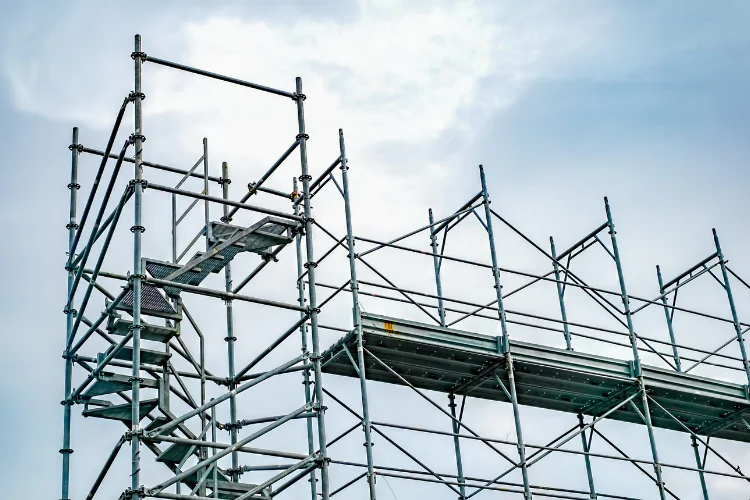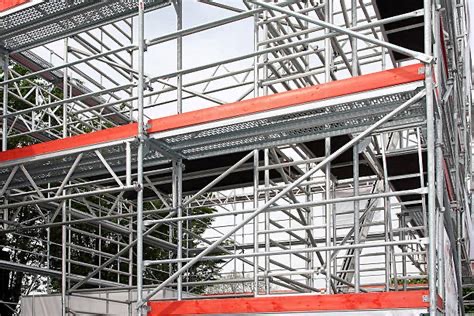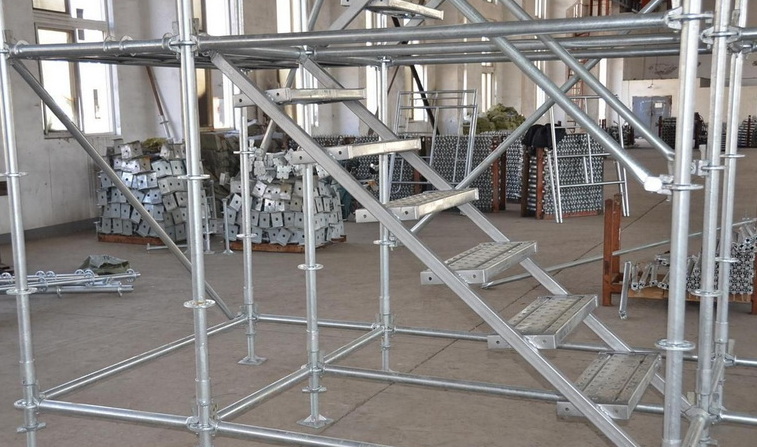Content Menu
● Understanding the Alumapole Scaffolding System
● Key Features That Simplify Setup
>> 1. Lightweight Aluminum Construction
>> 2. Intuitive Locking Mechanisms
>> 3. Adjustable Components for Versatility
>> 4. Minimal Tool Requirement
>> 5. Clear Assembly Instructions
● The Step-by-Step Setup Process
● Benefits of Choosing the Alumapole Scaffolding System
● Real-World Examples of Alumapole Scaffolding System
● Conclusion
● FAQ
>> 1. How quickly can the Alumapole Scaffolding System be set up?
>> 2. What safety features are included in the Alumapole Scaffolding System?
>> 3. Can the Alumapole Scaffolding System be used on uneven ground?
>> 4. What is the maximum load capacity of the Alumapole Scaffolding System?
>> 5. Is special training required to set up the Alumapole Scaffolding System?
● Citations:
When it comes to construction, renovation, or any project requiring work at height, the right scaffolding system can make all the difference. The Alumapole Scaffolding System is designed with simplicity and efficiency in mind, promising ease of setup without compromising on safety and stability. But how easy is it, really? This article delves into the setup process, key features, and benefits of the Alumapole system, illustrating why it's becoming a popular choice for professionals and DIY enthusiasts alike.

Understanding the Alumapole Scaffolding System
The Alumapole Scaffolding System is a modular scaffolding solution known for its lightweight yet robust design. Unlike traditional scaffolding that can be cumbersome and time-consuming to assemble, the Alumapole system is engineered for quick and straightforward setup, reducing labor costs and project timelines.
The system comprises several key components: vertical poles, adjustable braces, platforms, and secure locking mechanisms. These elements work together to create a stable and versatile working platform that can be adapted to various project requirements.
Key Features That Simplify Setup
Several features of the Alumapole Scaffolding System contribute to its ease of setup:
1. Lightweight Aluminum Construction
One of the most significant advantages of the Alumapole system is its lightweight aluminum construction. This makes it easier to handle and maneuver the components during assembly, reducing strain and fatigue for workers.
The use of aluminum doesn't compromise on strength,the Alumapole system is designed to meet or exceed industry safety standards, ensuring a secure working platform.
2. Intuitive Locking Mechanisms
The Alumapole Scaffolding System features intuitive locking mechanisms that simplify the connection of components. These mechanisms are designed for quick and secure attachment, minimizing the need for specialized tools or extensive training.
A simple click or lever action is often all that's required to lock the components in place, significantly reducing assembly time and the risk of errors.
3. Adjustable Components for Versatility
The Alumapole system includes adjustable components, such as braces and platforms, that allow for flexible configurations. This adaptability makes it easy to adjust the scaffolding to fit complex building shapes or uneven terrain.
Adjustable braces can be extended or retracted to provide optimal support and stability, while adjustable platforms ensure a level working surface, even on sloped ground.
4. Minimal Tool Requirement
Setting up the Alumapole Scaffolding System requires minimal tools. In most cases, a simple wrench or Allen key is all that's needed to tighten the locking mechanisms and secure the components.
This reduces the need for specialized equipment and makes the Alumapole system accessible to a wider range of users, including DIY enthusiasts and small contractors.
5. Clear Assembly Instructions
The Alumapole Scaffolding System comes with clear and concise assembly instructions that guide users through the setup process step-by-step. These instructions are often accompanied by diagrams or videos that further simplify the process.
Following the instructions carefully ensures that the scaffolding is assembled correctly and safely, minimizing the risk of accidents or structural failures.
The Step-by-Step Setup Process
While the specific steps may vary depending on the configuration and project requirements, the general setup process for the Alumapole Scaffolding System typically involves the following:
1. Preparation: Clear the work area and ensure a level surface for the scaffolding. Gather all the necessary components and tools.
2. Base Setup: Assemble the base of the scaffolding by connecting the vertical poles and base plates. Ensure that the base is stable and level before proceeding.
3. Brace Installation: Attach the adjustable braces to the vertical poles, using the locking mechanisms to secure them in place. Adjust the braces as needed to provide optimal support and stability.
4. Platform Placement: Place the platforms on top of the braces, ensuring that they are securely attached and level.
5. Safety Check: Before using the scaffolding, perform a thorough safety check to ensure that all components are properly connected and that the scaffolding is stable and secure.

Benefits of Choosing the Alumapole Scaffolding System
In addition to its ease of setup, the Alumapole Scaffolding System offers several other benefits:
- Enhanced Safety: The system is designed with safety in mind, featuring secure locking mechanisms, non-slip platforms, and guardrails to protect workers.
- Increased Efficiency: The quick and easy setup process reduces labor costs and project timelines, allowing workers to focus on their primary tasks.
- Versatile Applications: The Alumapole system can be adapted to a wide range of projects, including construction, renovation, maintenance, and event staging.
- Durable Construction: The aluminum construction is both lightweight and durable, ensuring that the scaffolding will last for many years.
- Cost-Effective: The Alumapole system offers a cost-effective scaffolding solution, combining ease of setup, durability, and versatility.
Real-World Examples of Alumapole Scaffolding System
The Alumapole Scaffolding System has been used in various projects, demonstrating its versatility and ease of use:
- Residential Painting: Homeowners have used the Alumapole system for exterior painting projects, appreciating its lightweight design and easy setup.
- Commercial Construction: Contractors have utilized the Alumapole system for building construction, citing its stability and adaptability to different building designs.
- Event Staging: Event organizers have employed the Alumapole system for creating stages and platforms, valuing its quick assembly and robust support.

Conclusion
In conclusion, the Alumapole Scaffolding System lives up to its promise of easy setup without compromising safety or stability. Its lightweight construction, intuitive locking mechanisms, and adjustable components make it a user-friendly option for both professionals and DIYers. By choosing the Alumapole system, you're investing in a reliable, efficient, and versatile scaffolding solution that can enhance productivity and ensure safety on any project.
FAQ
1. How quickly can the Alumapole Scaffolding System be set up?
The Alumapole Scaffolding System is designed for rapid assembly. With a small crew and basic tools, a standard setup can often be completed in under an hour. This quick setup significantly reduces labor costs and project delays.
2. What safety features are included in the Alumapole Scaffolding System?
The Alumapole Scaffolding System incorporates several key safety features, including non-slip platforms for secure footing, guardrails to prevent falls, and robust locking mechanisms to ensure stable connections. These features collectively enhance worker safety and minimize the risk of accidents.
3. Can the Alumapole Scaffolding System be used on uneven ground?
Yes, the Alumapole Scaffolding System is designed to adapt to uneven surfaces. Its adjustable components, such as the adjustable base plates and braces, allow for leveling the scaffolding on slopes or irregular terrain, ensuring a safe and stable working platform.
4. What is the maximum load capacity of the Alumapole Scaffolding System?
The maximum load capacity of the Alumapole Scaffolding System varies depending on the configuration and specific components used. However, it is engineered to meet or exceed industry standards for load-bearing capacity, providing a secure platform for workers and materials. Always consult the manufacturer's specifications for the exact load capacity of your specific setup.
5. Is special training required to set up the Alumapole Scaffolding System?
While the Alumapole Scaffolding System is designed for easy setup, proper training is recommended to ensure safe and correct assembly. The system comes with detailed instructions, and additional training resources may be available from the manufacturer. Proper training enhances safety and maximizes the efficiency of the setup process.
Citations:
[1] https://pplx-res.cloudinary.com/image/upload/v1740571215/user_uploads/CeSuPcovqtdMSCe/image.jpg
[2] https://pplx-res.cloudinary.com/image/upload/v1740571215/user_uploads/rblRsdJYvqCaenH/image.jpg






















